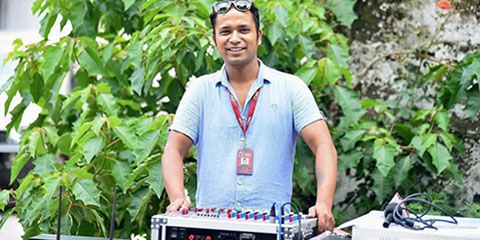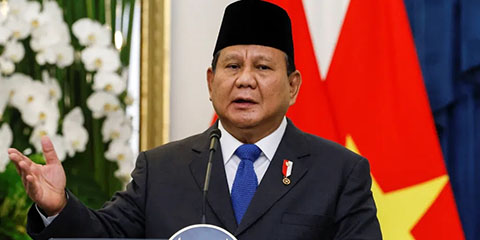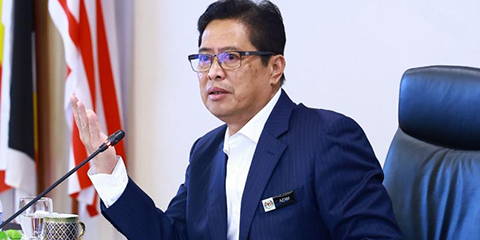JournalismPakistan.com | Published July 28, 2024 at 04:30 pm | Tariq Ali
Join our WhatsApp channel
ISLAMABAD—The rapid rise of social media has significantly impacted traditional news outlets across the globe, and Asia is no exception. As more people turn to platforms like Facebook, Twitter, and Instagram for news and information, traditional media organizations are facing unprecedented challenges. This shift is transforming the way news is consumed, produced, and disseminated in the region.
Changing Consumption Patterns
Social media has revolutionized news consumption patterns in Asia. With the proliferation of smartphones and affordable internet access, millions of users can now access news in real time. This immediacy has led to a decline in newspaper circulation and television viewership, as audiences prefer the convenience and speed of social media updates.
New Avenues for News Delivery
Traditional news outlets in Asia are adapting to these changes by establishing a strong online presence. Many have launched their own social media channels, where they share news articles, videos, and live updates. This strategy not only helps them reach a broader audience but also allows for more interactive and engaging content.
Challenges and Opportunities
While social media offers numerous benefits, it also presents significant challenges for traditional news outlets. The competition for attention is fierce, with social media algorithms favoring sensational and viral content. This often results in the spread of misinformation and fake news, undermining the credibility of established news organizations.
However, the digital shift also presents opportunities for traditional media. By leveraging social media analytics, news outlets can gain insights into audience preferences and tailor their content accordingly. Additionally, social media platforms provide a space for investigative journalism and in-depth reporting, which can help traditional media regain their authority and trust.
The Future of News in Asia
As social media continues to grow, the relationship between traditional news outlets and digital platforms will evolve. Collaboration and adaptation will be key to survival. Traditional media must embrace digital transformation and innovate to stay relevant in the fast-paced media landscape of Asia.
The impact of social media on traditional news outlets in Asia is profound and multifaceted. While it poses challenges, it also offers opportunities for growth and innovation. By understanding and adapting to these changes, traditional media organizations can continue to play a crucial role in informing and educating the public.
About the author: Tariq Ali is a freelance journalist. He specializes in digital media trends and their impact on traditional journalism.

April 01, 2025: Photojournalist Suresh Rajak was burned alive while covering a violent protest in Kathmandu. The IFJ and its affiliates condemn the attack and call for an urgent investigation to hold the perpetrators accountable.

April 01, 2025: Assam Police arrested digital journalist Dilwar Hussain Mozumder for covering a protest against alleged corruption at Assam Co-Operative Bank. Media organizations have condemned the arrest, calling it an attack on press freedom.

March 27, 2025: Several journalists were attacked and forced to delete footage while covering anti-military protests in Indonesia. CPJ urges authorities to hold the perpetrators accountable.

March 23, 2025: The severed pig’s head sent to Indonesia’s leading news outlet, Tempo, signals escalating media intimidation amid President Prabowo Subianto’s attacks on foreign-funded media.

March 14, 2025: The Committee to Protect Journalists (CPJ) urges Maharashtra authorities to ensure their AI-driven media monitoring plan does not undermine press freedom. The initiative, which classifies news as positive or negative, raises concerns over government overreach and self-censorship.

March 11, 2025: Indian journalist and RTI activist Raghvendra Bajpai was shot dead in Uttar Pradesh on March 8 in a targeted attack. Media organizations, including IFJ, NUJ-I, and IJU, demand justice and an urgent investigation into his murder.

March 06, 2025: The arrest of Malaysiakini journalist B. Nantha Kumar by the Malaysian Anti-Corruption Commission has raised concerns over press freedom. The IFJ and NUJM call for a transparent investigation amid allegations of bribery and ongoing state harassment of independent media.

February 28, 2025: The Dewan Rakyat passed the Malaysian Media Council Bill on February 26, marking a historic step toward independent media regulation. Supported by journalists, unions, and media bodies, the council aims to set ethical standards, improve working conditions, and reform restrictive laws. The NUJM and IFJ celebrate this milestone while urging independence and adequate resourcing for the council.

April 11, 2025 Sindhi journalist AD Shar was brutally murdered in Khairpur, Sindh. His body was found dumped on Handiyari Link Road. PFUJ has declared a three-day mourning period and demanded justice.

April 10, 2025 The Azad Jammu and Kashmir government has filed a case against The Daily Jammu & Kashmir and its staff for alleged fake news, drawing condemnation from PFUJ and IFJ, who demand immediate withdrawal of the FIR and an end to media repression in Pakistan.

April 08, 2025 Journalist Arzoo Kazmi alleges that Pakistan's state agencies, including the FIA, have blocked her CNIC, passport, and bank account while threatening her. She calls it a direct attack on journalism.

April 07, 2025 The Islamabad High Court has directed IG Islamabad to produce journalist Ahmad Noorani’s missing brothers, as the Ministry of Defence denies custody. SIM activity was traced in Bahawalpur, and investigations into their suspected abduction continue.

April 07, 2025 Journalist and Raftar founder Farhan Mallick has been granted bail by a Karachi court in a case concerning anti-state content aired on his YouTube channel. He still faces separate charges related to an alleged illegal call center and data theft.